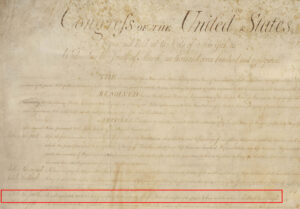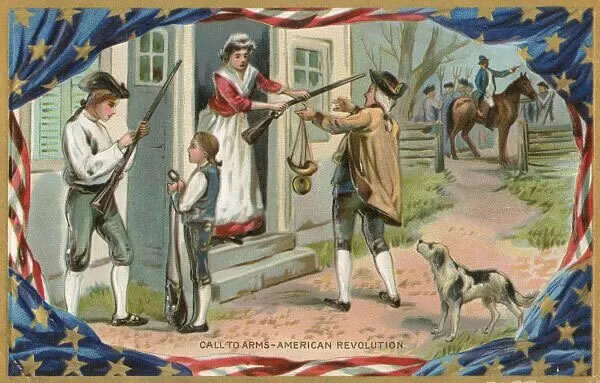When I initially started writing this piece, my intention was to do one extended post covering three areas, gun laws, current societal norms and constructs, and potential ways to try and curb the growing amount of gun violence we’re currently seeing in the U.S. After really diving into it and doing a lot of research on the topic, I decided to split it up into three separate pieces.
There’s just too much detail to briefly mention or glaze over which is the growing trend in today’s media, and as I started writing this first part, I decided to let the subject matter lead me where it may.
Here in Part One, we’ll look at the Second Amendment as stated in the U.S. Constitution, it’s meaning and how it’s shaped gun culture in the fabric of our nation. We’ll also take a look at gun laws in the U.S. as compared to other, first-world nations.

“Grand Theft Auto IV” fueled the violent video-game debate when it was reported that an 8-year old – child – shot and killed his elderly caretaker after he had been playing the popular video game. The debate has been going on for 30 years, but to date, the studies have been inconclusive.
In Part Two, we’ll take a look at the current social norms and societal constructs of today as compared to when the founding fathers first put pen to parchment in order to draft up the Bill of Rights and the U.S. Constitution.
And finally in Part Three, we’ll take a look at some controversial solutions that may or may not help slow down, or curb the growing trend of gun violence in the U.S.
With the consistently growing number of gun-related deaths that we’ve experienced in the U.S. this year, two distinct groups have emerged: one group believes that the availability of guns in America is the cause and that all firearms should be banned. The other group fully supports the Second Amendment (2A) and believes that guns aren’t to blame, but rather the increasing trend of mental illness in our society.
While I agree with some points on both sides of the argument, I don’t think the picture is quite so cut and dry. In fact, it’s my opinion that the drastic increase in mass-shootings and gun-related deaths are directly related to two distinct causes: the quality of our gun laws on both a state and federal level, and the gradual breakdown of society due to technology, politics and other factors.
With that said, let’s start from the very beginning:
Second Amendment (2A) and the U.S. Constitution
 Guns have always been integrated into the fabric of the United States. As stated in the Second Amendment of the U.S. Constitution:
Guns have always been integrated into the fabric of the United States. As stated in the Second Amendment of the U.S. Constitution:
“A well regulated Militia, being necessary to the security of a free state, the right of the people to keep and bear Arms, shall not be infringed.”
This one statement has been the battle ground for advocates and opponents – from the definition of “militia” then and now, to the punctuation used between “free state” and “the right of the people…”
A Well Regulated Militia
Back when the Constitution was written, “well regulated” basically meant, “well trained or practiced” and “in good working order”. With the second part of the amendment, “… the right of the people to keep and bear arms shall not be infringed” indicates that the people were the militia without being members of any formal military organization.
According to U.S. Government Code, militia is defined as:
-
“(a) The militia of the United States consists of all able-bodied males at least 17 years of age and, except as provided in section 313 of title 32, under 45 years of age who are, or who have made a declaration of intention to become, citizens of the United States and of female citizens of the United States who are members of the National Guard.
-
(b) The classes of the militia are—
-
(1) the organized militia, which consists of the National Guard and the Naval Militia; and
-
(2) the unorganized militia, which consists of the members of the militia who are not members of the National Guard or the Naval Militia.“
-
Source: 10 U.S. Code § 246
Along with the U.S. Government Code cited above, we’ve also seen the courts affirm these points as well.
In US vs Miller: The signification attributed to the term Militia appears from the debates in the Convention, the history and legislation of Colonies and States, and the writings of approved commentators. These show plainly enough that the Militia comprised all males physically capable of acting in concert for the common defense. Further, that when called for service these men were expected to bear arms supplied by themselves and of the kind in common use at the time.
In Pressor vs Illinois, the term is clarified further and says that the states cannot prohibit people from owning firearms.
So, we can easily see here that the people are a militia and have the right to keep and bear arms in order to defend the country. But what about self-defense? That issue has, more recently, come into question and been addressed in a couple court cases cited below:
-
District of Columbia v. Heller, was a case in which the U.S. Supreme Court on June 26, 2008, held that the Second Amendment guarantees an individual right to possess firearms independent of service in a state militia and to use firearms for traditionally lawful purposes, including self-defense within the home.
-
New York State Rifle and Pistol Association v. Bruen (a) re-affirms individual self-defense is central to the Second Amendment, (b) affirms some long-standing regulations are permissible (such as schools being sensitive places), but those regulations do not mean states can make an entire area a sensitive place when there is no history for doing so.
-
New York State Rifle and Pistol Association v. Bruen as it relates to the NFA and proposed assault weapon bans: (a) through the phrase “in common use” because the so-called “assault weapons” (semi-automatic rifles) are one of the most owned rifles today, (b) carrying, ownership, and usage of so-called assault weapons in public or at home for self-defense is legal per the Second Amendment, and (c) other rights in the Bill of Rights are not regulated (NFA) to the point of being a tier-class right , the usage of “different body of rules” can be implied to mean a set of rules made by a bureaucracy which go against the Second and other Amendments.
As per these court cases and the definitions of “militia”, the second amendment is pretty clear in its intention as written by the founding fathers of our country.
But opponents of gun rights continue to argue that other first-world, civilized nations don’t have nearly as many firearm-related deaths as we do here in the U.S. and that’s all due to their stricter gun laws. But is that an accurate statement?
While I’m not aware of any other “first-world, civilized nations” having a second amendment like we do – lets take a look at some of those countries and their gun laws.
Current State of Gun Laws in the United States
So how has the number of gun laws on the books grown or shrunk over the years? Unfortunately, this question isn’t easily answered from the perspective of finding exact numbers and trend graphs over the decades, but do a little digging and you can get a fairly good idea.
In July of 2017, the American Journal of Public Health published an excellent study entitled “Firearm-Related Laws in All 50 US States, 1991–2016“.
 Average Number of Firearm Law Provisions by Year, Top 10 vs Bottom 10 States in Terms of Number of Firearm Laws in 1991: All 50 United States, 1991–2016
Average Number of Firearm Law Provisions by Year, Top 10 vs Bottom 10 States in Terms of Number of Firearm Laws in 1991: All 50 United States, 1991–2016
While the study only goes to 2016, you can easily see the growing trend toward more State firearm laws on the books since 1991.
More recently, last year, CNN published an article: “These are the gun control laws passed in 2022“. In this article, CNN summarized what Federal and State gun laws were approved in 2022.
In looking at just these two sources of information, it’s safe to say that as of right now, we have more State and Federal gun laws on the books than we have ever had in the history of the U.S. However, it should be noted that, it isn’t the number of gun laws on the books that’s important but rather the quality of those gun laws and how effective they are across a broad spectrum in terms of curbing unnecessary violence.
How do U.S. Gun Laws Compare to Other Countries?
A year ago, the Council on Public Relations published an interesting article entitled: “U.S. Gun Policy: Global Comparisons“.
It’s interesting from the perspective that if you compare the gun laws in other countries vs the State and Federal gun laws here in the U.S., it’s undeniable that our laws are pretty weak in comparison.

Gabriel Wortman reportedly targeted his first victims before launching random attacks killing 22 people in Nova Scotia back in 2020
For example: our neighbor to the north, Canada, classifies firearms in three separate categories: ordinary rifles and shotguns – non-restricted, handguns and semiautomatic rifles or shotguns – restricted, and automatic weapons – prohibited.
In 1995, the Canadian government changed the law to require individuals to obtain a license to purchase firearms and ammunition as well as register all firearms. That change to the law was eventually dropped and the registration records expunged, but that part of the law was later voted back into effect in 2020 after a gunman killed twenty two people.
Other countries such as Japan have even stricter gun laws in place.
Along with Japan and Canada, Australia requires mandated licensing and registration of firearms as well as Israel, the UK and Norway.
However, one interesting statement from the CPR article linked above regarding the second amendment here in the U.S. caught my eye:
“However, the right to bear arms is not unlimited. The U.S. Congress and state legislatures have authority to enact controlling legislation, and the U.S. Supreme Court has upheld some firearms restrictions, such as bans on concealed weapons and on the possession of certain types of weapons, as well as prohibitions on the sale of guns to certain categories of people.”
The statement “the right to bear arms is not unlimited…” is the statement that most staunch 2A supporters have the most difficulty with. That’s because, the Founding Fathers didn’t include that in their wording. They simply stated, “the right of the people to keep and bear arms, shall not be infringed.” In the eyes of 2A supporters, “shall not be infringed” is a free ticket that they fight for vehemently.
But what is an infringement as it relates to 2A?
It’s basically a violation or an unauthorized act – to encroach upon a sovereign right of a group of people. According to USLegal.com, “sovereign right” is defined as:
“A sovereign right refers to a legal right possessed by state or its agencies and enables a state to carry out its official functions for the benefit of public. Sovereign right is distinct from certain proprietary rights because those proprietary rights may be possessed by private persons.”
So, while many people who are against personal possession of firearms argue that the U.S. has extremely lax gun laws in comparison to other countries and needs much stricter gun laws, those other countries don’t have an amendment in their founding documentation that gives their citizens, the non-infringible right to keep and bear arms.
This is the main reason why firearms have become an important thread in the fabric of the U.S. for over two centuries and any laws passed to restrict gun ownership is met with a hailstorm of controversy because of the Second Amendment.
Any legislation that proposes to ban any and all firearms or the parts used in the manufacturing of firearms is in direct conflict to the U.S. Constitution and the Second Amendment.
But what about machine guns? They’ve been federally regulated since the 1930s and the manufacture and importation of new machine guns has been banned for sale to civilians since 1986 as per the Firearm Owners Protection Act.
Now, you can legally own a machine gun, as long as it was purchased prior to 1986. However, to purchase one of them now, you have to apply to the federal government for approval by submitting a Form IV with fingerprints and undergoing an extensive FBI background check that can take up to 12 months, along with a tax stamp. From what we’ve heard, even if you do go through the proper paperwork and background check, you rarely have a shot in hell at being approved.
So, while the Second Amendment clearly states that people have the right to keep and bear “arms” (no mention of specific types…) without infringement, we can see here that the federal government has and will continue to try and regulate certain types of firearms. But why?
The Firearms of Yesterday vs Today
Around the time that the U.S. Constitution was written, the smooth bore flintlock musket and flintlock pistols were the most common firearms available. Both muskets and pistols were single shot only and the muskets were about five feet long and weighed in at nearly ten pounds!
If a skilled shooter was lucky, they could possibly fire off about three to four rounds per minute and pray for accuracy. Compare that to the capability of today’s firearms!
Back then, the founding fathers couldn’t possibly imagine where firearm technology would go and the incredible capability and accuracy of today’s semi-automatic firearms.
So, in taking a look at the exact wording and documented interpretation of the Second Amendment, U.S. firearms laws as compared to other first-world countries, and the differences in firearms now vs. 200+ years ago, it’s easy to understand how technology and the U.S. Constitution have allowed the proliferation of firearms throughout our society.
In Part 2, we’ll take a look at society, norms & mores, and mental illness, then and now, and how the state of society today plays an important factor in the gun violence we see today.
Stay tuned!



